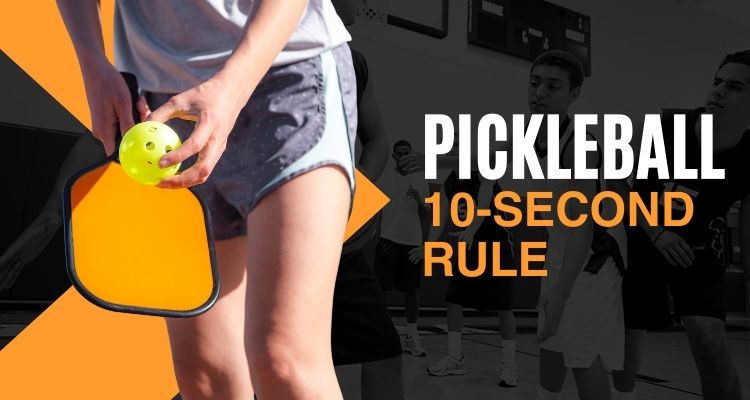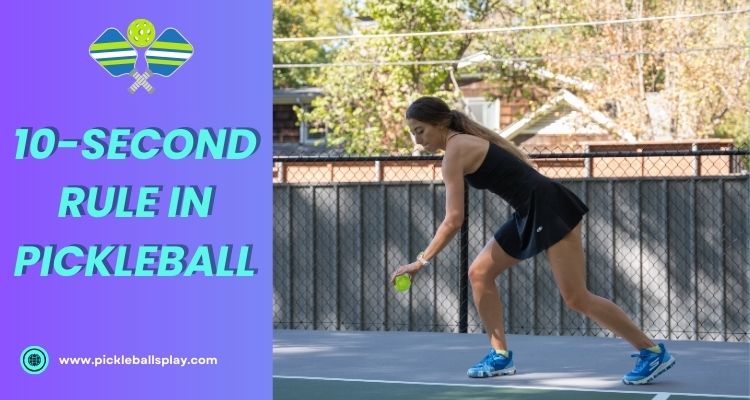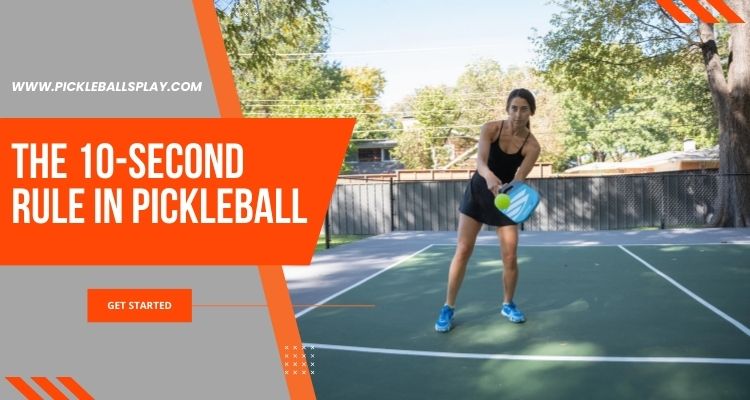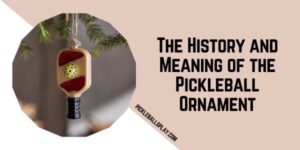Pickleball is a sport known for its fast-paced and strategic gameplay. While many players focus on mastering their serves, volleys, and smashes, understanding the rules is just as important. Among these rules, the 10-second rule plays a crucial role in maintaining the flow of the game.
This rule might seem straightforward, but it carries significant importance in ensuring fair play and preventing unnecessary delays. Let’s dive deep into what the 10-second rule in pickleball is, why it matters, and how to apply it correctly in your games.

What Is the 10-Second Rule?
The 10-second rule in pickleball refers to the amount of time a server has to serve the ball once the referee or the receiving team is ready. According to the official rules, the server must initiate the serve within 10 seconds after the score is called. This rule ensures that the game proceeds smoothly without any unnecessary delays. It also puts pressure on the server to remain focused and prepared to serve quickly.
Why the 10-Second Rule Is Important
The 10-second rule serves multiple purposes in pickleball. First, it helps maintain the game’s pace. Pickleball is designed to be a fast and engaging sport, and long delays between serves can disrupt the flow of the game. The rule also prevents players from gaining an unfair advantage by stalling. Without the 10-second rule, a server could potentially take too long to serve, which could frustrate the opponent and break their concentration. By limiting the time allowed to serve, the rule keeps the game fair and competitive for both sides.
Understanding the Timing: When Does the 10 Seconds Start?
The 10-second countdown begins once the score is announced by the referee or when the receiver signals readiness if there is no referee. It’s important to note that this timing is strictly enforced. If the server exceeds the 10-second limit, it results in a fault, and the server is lost.
This can be especially critical in close matches where every point counts. Players need to be aware of when the 10 seconds start to ensure they don’t accidentally commit a fault due to a time violation.

Consequences of Violating the 10-Second Rule
Violating the 10-second rule in pickleball can have immediate consequences. If the server takes longer than 10 seconds to serve after the score is called, it is considered a fault. The server loses its opportunity to serve, and the opposing team gains the serve or a point, depending on the game’s situation. This can turn the tide in a match, especially if the server is in a strong position. It’s a rule that emphasizes the importance of readiness and discipline on the court.
How the 10-Second Rule Differs in Singles and Doubles
The 10-second rule applies equally in both singles and doubles pickleball. However, in doubles, the dynamics can be slightly different. In doubles, communication between partners is crucial, and this can sometimes lead to slight delays.
For example, if partners are discussing strategy or positioning before the serve, they need to be mindful of the 10-second limit. The server must still deliver the service within 10 seconds, regardless of any discussions or adjustments. This rule ensures that doubles matches remain as fast-paced and competitive as singles matches.
Common Situations Where the 10-Second Rule Is Important
There are several common scenarios in pickleball where the 10-second rule becomes particularly important. One such scenario is during intense rallies where the server might need a moment to catch their breath or regain focus. While taking a brief pause is allowed, the server must still adhere to the 10-second limit.
Another scenario is when there’s a dispute over the score or a close call. After the issue is resolved, the server must be quick to resume play within the 10-second window. Understanding how to handle these situations is key to avoiding faults and maintaining the momentum of the game.
Tips for Staying Within the 10-Second Limit
Staying within the 10-second limit requires a combination of focus, preparation, and awareness. Here are some tips to help you manage your time effectively:

- Practice Quick Serves: During practice, work on delivering your serve quickly and efficiently. This will help you become accustomed to the 10-second rule and reduce the likelihood of committing a fault during a match.
- Stay Focused: Keep your mind in the game and be ready to serve as soon as the score is called. Avoid getting distracted by outside factors or engaging in long discussions with your partner.
- Pre-Serve Routine: Develop a pre-serve routine that helps you get into the right mindset quickly. This could include bouncing the ball a couple of times, taking a deep breath, or visualizing your serve. Just make sure your routine fits within the 10-second window.
- Communicate Efficiently in Doubles: In doubles matches, communicate quickly and effectively with your partner before the serve. This ensures you’re both on the same page without wasting precious seconds.
- Stay Aware of the Clock: If possible, keep an eye on the game clock or listen carefully to the referee’s cues. This will help you gauge how much time you have left and prevent any surprises.
What Happens When the 10-Second Rule Is Disputed?
In some cases, there might be disputes over whether the 10-second rule was violated. This usually occurs when the server feels they were within the time limit, but the referee or opposing team believes otherwise. If a dispute arises, the referee’s decision is final in officiated matches. In non-officiated games, the players may need to come to an agreement or follow the general rule of good sportsmanship. It’s essential to handle such disputes calmly and respectfully to maintain the integrity of the game.
How the 10-Second Rule Impacts Strategy
The 10-second rule can influence the overall strategy in pickleball. For instance, some players use the time to their advantage by serving quickly, catching their opponent off-guard. Others may use it to settle their nerves and focus on executing a perfect serve. Knowing how to balance speed and strategy within the 10-second limit can give you a competitive edge. It’s also important to observe your opponent’s tendencies. If they consistently take the full 10 seconds, you might be able to anticipate their serve better.
Adapting to the 10-Second Rule in Competitive Play
In competitive play, adhering to the 10-second rule is even more critical. High-level matches are often closely monitored by referees, and the margin for error is slim. Players at this level need to be well-practiced in delivering their serves promptly and efficiently. Any delay or hesitation could result in a fault and a potential shift in the match’s momentum. Competitive players often train specifically to manage their time and maintain focus under pressure, making the 10-second rule second nature.
The Psychological Aspect of the 10-Second Rule
The 10-second rule isn’t just about physical readiness; it also has a psychological aspect. The pressure of having a limited time to serve can affect a player’s mental game. Some players thrive under this pressure, using it to sharpen their focus and execute precise serves.
Others might feel rushed, leading to mistakes or faults. Understanding your mental response to the 10-second rule can help you develop strategies to stay calm and confident during the game. Practicing mindfulness and relaxation techniques can be beneficial in managing the psychological impact of the rule.
Conclusion
The 10-second rule in pickleball is a fundamental aspect of the game that ensures fair play and maintains the sport’s fast-paced nature. While it may seem like a simple rule, its implications are far-reaching, affecting everything from game flow to player strategy. By understanding the rule and practicing within its limits, you can improve your gameplay and avoid unnecessary faults.
Whether you’re playing in a casual match or a competitive tournament, mastering the 10-second rule will help you stay focused, prepared, and ready to perform at your best. Remember, in pickleball, every second counts!




